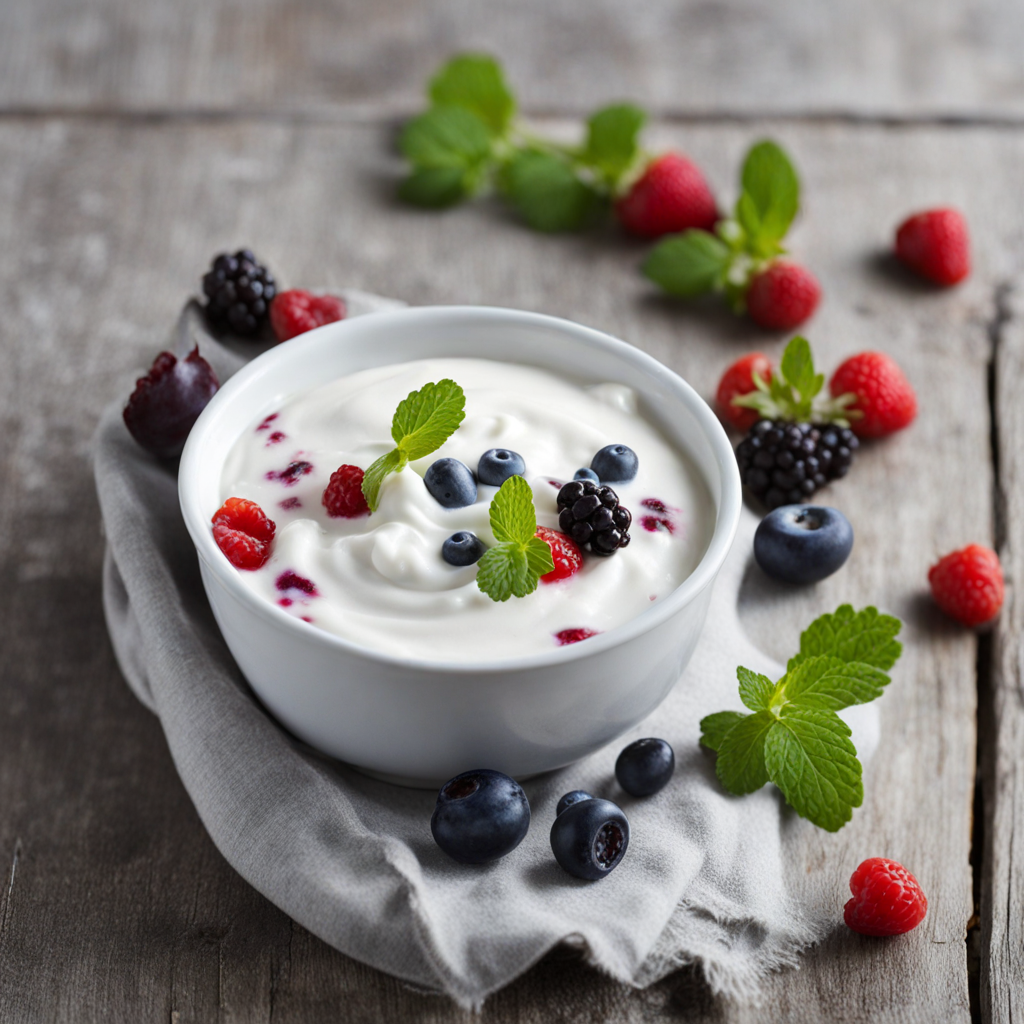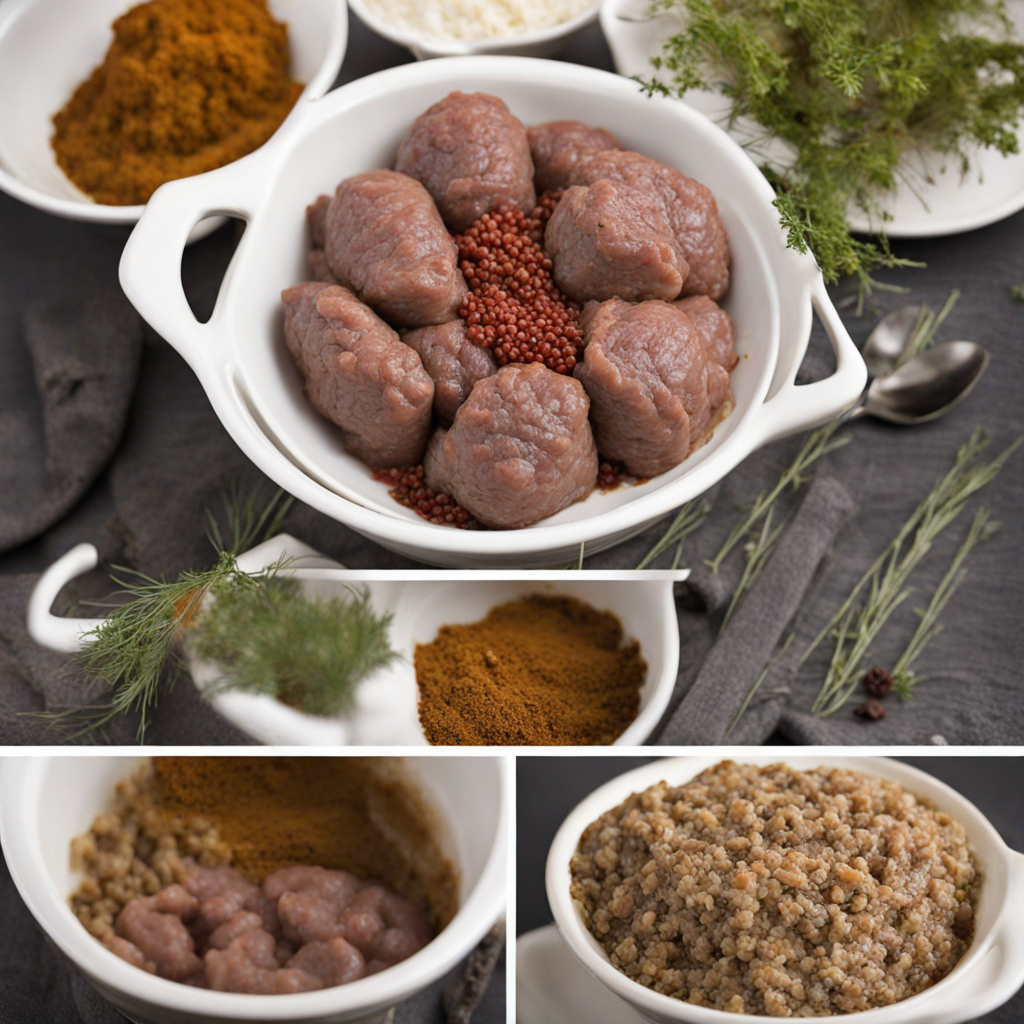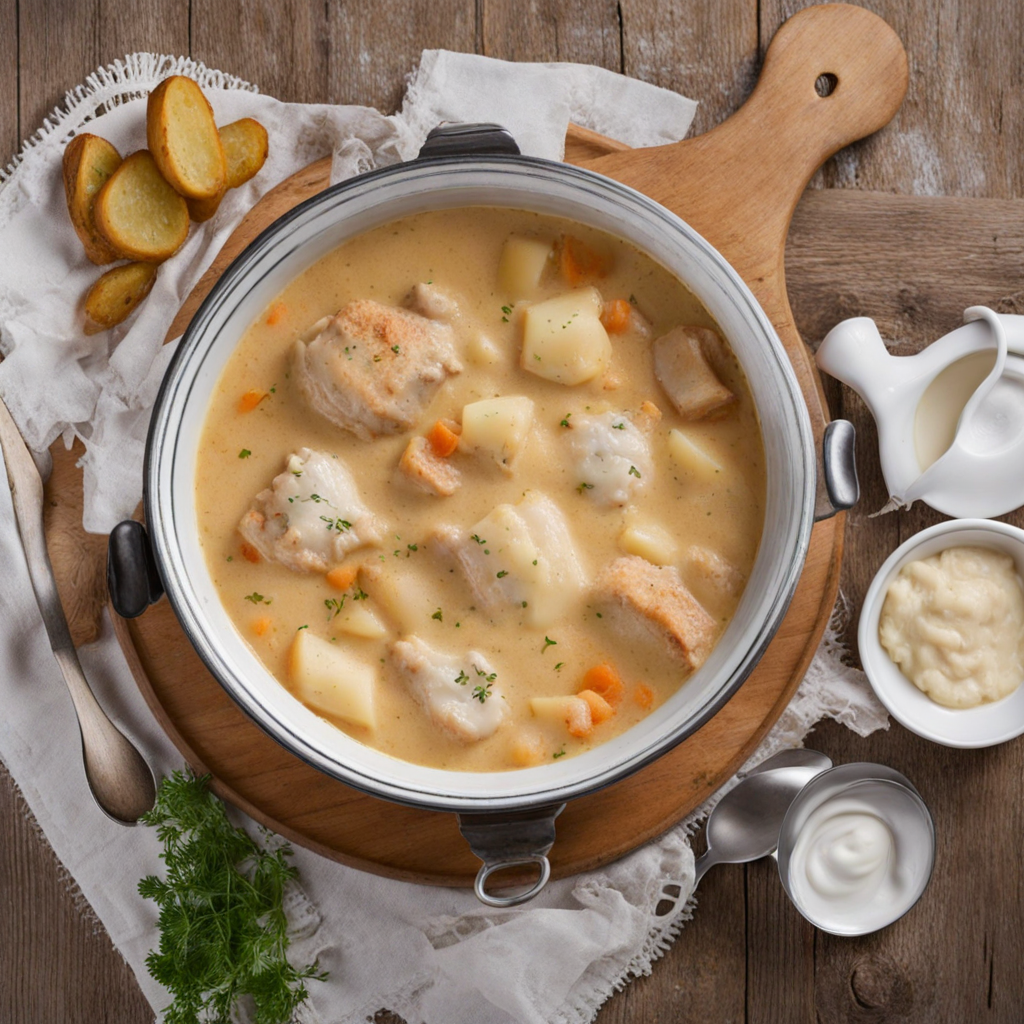Skyr
Skyr is a traditional Icelandic dairy product that offers a unique blend of flavors and textures, making it a delightful discovery for any food enthusiast. Often described as a cross between yogurt and cheese, skyr has a thick and creamy consistency, yet it remains surprisingly light. Made from skimmed milk, it is low in fat but high in protein, making it not only a tasty treat but also a nutritious option. The tangy flavor profile sets it apart, providing a refreshing taste that can be both sweet and slightly sour, depending on the variety. Traditionally, skyr is enjoyed plain, but it can also be enhanced with various toppings and flavors. Many Icelanders enjoy it with fresh fruits, honey, or granola, creating a delicious breakfast or snack. Its versatility shines through in numerous recipes, from smoothies to desserts, where it can be used to add creaminess without the extra calories. The subtle flavor of skyr pairs well with both sweet and savory ingredients, allowing for endless culinary experimentation. Beyond its taste, skyr carries a rich history rooted in Icelandic culture, dating back over a thousand years. This time-honored product is not just a staple in Icelandic households; it’s also gaining popularity worldwide as a superfood. With its probiotic benefits and creamy texture, skyr is perfect for those seeking a wholesome and satisfying alternative to conventional dairy products. Exploring skyr is not just about tasting a new food; it's about experiencing a piece of Icelandic heritage that continues to be cherished in modern cuisine.
How It Became This Dish
Origins of Skyr Skyr, a traditional Icelandic dairy product, has roots that stretch back over a thousand years to the Viking Age. The word "skyr" itself is derived from the Old Norse word for "sour," reflecting its tangy flavor profile. The Vikings brought their dairy farming practices to Iceland in the late 9th century, and they began to make this thick, yogurt-like product using the milk from their cows, sheep, and goats. The method of producing skyr involves culturing milk with specific bacterial cultures and then straining it to create a dense, creamy texture. This technique allowed early Icelanders to preserve milk in a harsh climate where refrigeration was non-existent. The fermentation process involved in making skyr not only extended the shelf life of milk but also enriched its nutritional value, making it a staple food item for the Icelandic population. Being high in protein and low in fat, skyr became a critical source of sustenance for both the common people and the farming community. While it was traditionally made from raw milk, modern production utilizes pasteurized milk, adhering to contemporary safety standards. \n\n Cultural Significance Skyr holds a prominent place in Icelandic culture, often considered more than just a food item; it embodies the very essence of Icelandic heritage and identity. It is deeply woven into the fabric of Icelandic culinary traditions and is often featured in folklore and literature. The sagas of the Norsemen, for instance, mentioned various dairy products, including skyr, showcasing its historical importance. Today, skyr is not only a staple in Icelandic households but is also a symbol of national pride. It is frequently served at meals, enjoyed with berries or honey, and used in a variety of dishes, from smoothies to desserts. Social gatherings often showcase skyr, reinforcing its role in community bonding. The love for skyr is so profound that it has transcended mere consumption; it has become a cultural icon, celebrated in festivals and food events across the country. \n\n Development Over Time As Iceland underwent various social and economic changes, so too did the production and consumption of skyr. The 20th century marked a turning point, as industrialization and globalization began to influence food production. In the 1930s, commercial production of skyr began, leading to its widespread availability. This transition from handcrafted to mass-produced skyr allowed it to gain popularity beyond the Icelandic borders. In the 1980s and 1990s, the health food movement began to take hold in Europe and North America, and with it, an increased interest in traditional and natural foods. Skyr, with its high protein content and low fat, became an appealing option for health-conscious consumers. Icelandic dairy companies began exporting their products, and skyr soon found itself on the shelves of grocery stores in various countries, particularly in the United States and the United Kingdom. \n\n Modern Variations and Global Influence In the 21st century, skyr has evolved into a versatile food product, with numerous variations and flavors available to cater to diverse palates. While traditional skyr is known for its plain and slightly sour taste, modern producers have introduced fruit-flavored versions, incorporating ingredients like strawberries, blueberries, and vanilla. This innovation has helped skyr maintain its relevance in a competitive global market. Additionally, the rise of the "superfood" trend has further propelled skyr into the spotlight. Its high protein content, probiotic benefits, and low sugar levels make it an attractive option for those looking to enhance their diets. Many health enthusiasts have embraced skyr as a substitute for heavy cream or mayonnaise in recipes, promoting its versatility in both savory and sweet dishes. \n\n Environmental and Economic Aspects Skyr production also reflects Iceland's commitment to sustainable practices. The country’s unique geography and climate contribute to the quality of its dairy products. Icelandic farmers utilize grass-fed livestock, and many adhere to organic farming principles. This emphasis on sustainability not only results in high-quality skyr but also aligns with the growing consumer demand for environmentally conscious food products. Economically, skyr has become a significant export product for Iceland, contributing positively to the nation's economy. The success of Icelandic dairy brands in international markets has not only created jobs but has also fostered a renewed interest in Icelandic cuisine and culture globally. Culinary tourism in Iceland often includes experiences centered around traditional foods, including skyr, further enhancing its significance as a cultural ambassador for the nation. \n\n Conclusion Skyr is a fascinating example of how a traditional food can evolve while retaining its cultural roots. From its origins in Viking settlements to its status as a modern superfood, skyr has navigated the complexities of time and globalization. It serves not only as a nourishing staple for Icelanders but also as a bridge connecting Iceland's past with its present and future. As it continues to find new fans around the world, skyr remains a testament to the resilience and adaptability of culinary traditions in the face of changing times.
You may like
Discover local flavors from Iceland







